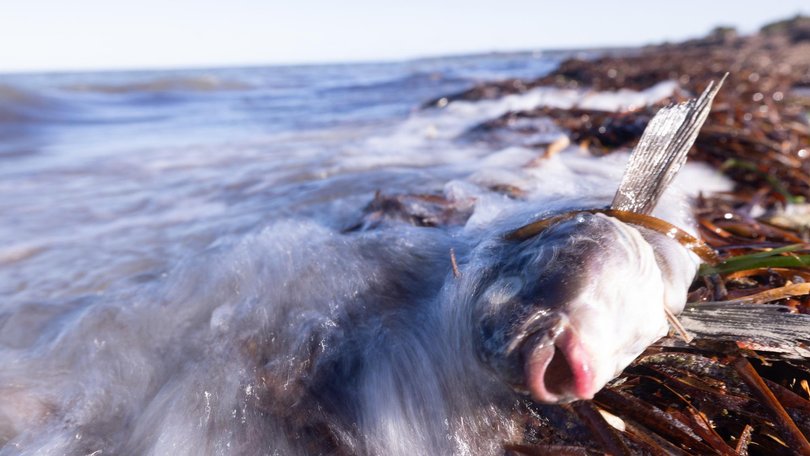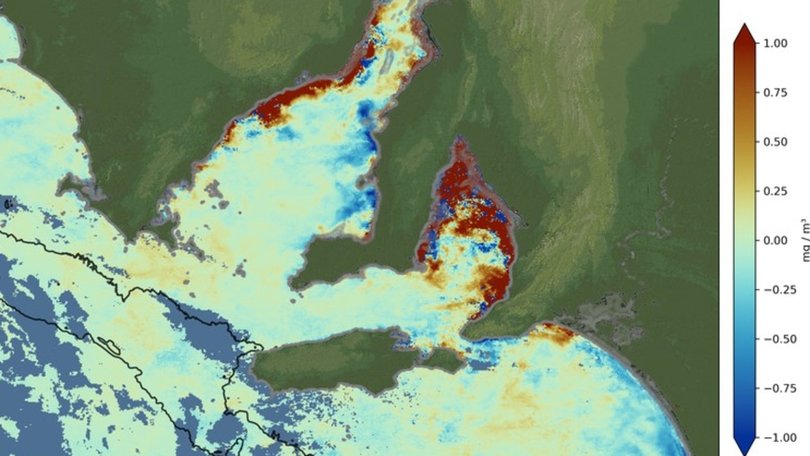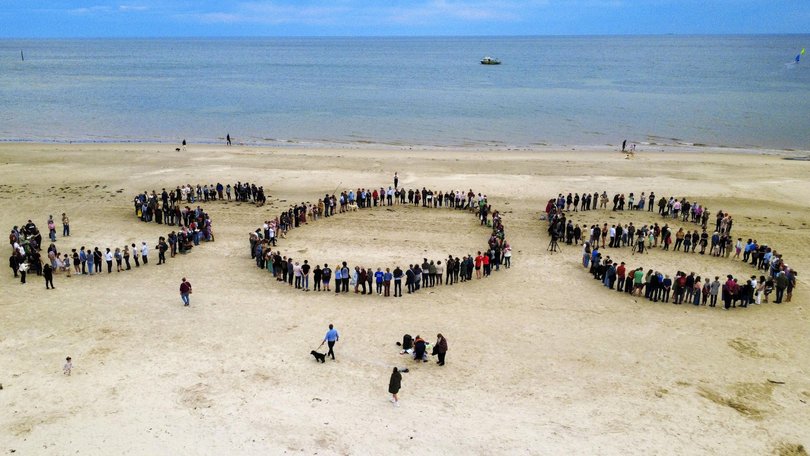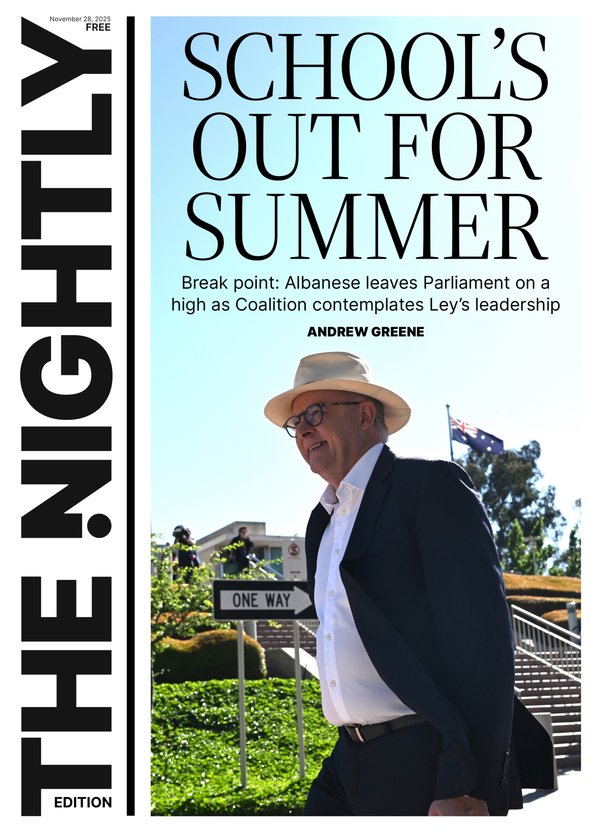South Australia’s devastating algal bloom now covers 4500sq km, twice the size of ACT

South Australia’s devastating algal bloom is now twice the size of the entire ACT, a senate inquiry has been told, covering some 4500sq km, but the scale of it is not unusual.
US scientist and harmful algal bloom expert Donald Anderson told senators in Canberra on Wednesday that the vast bloom that has poisoned South Australia’s coastline since March was “significant” but not “extraordinary”.
“The bloom you have is a significant one, but it is not extraordinary,” he said, dialling in from the US.
Sign up to The Nightly's newsletters.
Get the first look at the digital newspaper, curated daily stories and breaking headlines delivered to your inbox.
By continuing you agree to our Terms and Privacy Policy.“I know that might be hard to believe.”
He warned that numerous outbreaks of a similar or comparable size had struck other parts of the world.
The bloom has killed thousands of marine wildlife and smashed the state’s lucrative seafood and coastal tourism industries.
Dr Anderson stated bluntly the bloom was now too large to be controlled.
“The bloom you have is far too extensive, too big, to consider controlling (it),” he said.
“The best we can do these days is to manage them, to provide information on where they are, how toxic they are, if various resources are safe to eat, what symptoms people might experience if they did consume something.
“None of that is direct control. Your next step is to develop that kind of knowledge.”
A senate inquiry into the event held public hearings across Adelaide, Port Lincoln, Ardrossan and Victor Harbour earlier this month, with a final hearing in Canberra on Wednesday.
Button Fisheries owner Bart Butson, speaking in Ardrossan, said he hadn’t seen any calamari or squid in the St Vincent Gulf for the past 2½ months.
“That is just incredible for us. It shouldn’t happen,” he said.
Port Lincoln Mayor Diana Mislov told the senators that fishermen in the iconic “seafood capital of Australia” were struggling to catch fish in the Spencer Gulf.
“We’re feeling it on our bays – the fish just aren’t biting, they are not there,” she said.
There are also concerns the bloom could continue into spring and summer.
Dr Anderson said algal blooms in Florida in 2018 had lasted for 17 months.
He said researchers were testing out the use of clay material to control blooms, but the technology was applicable to relatively small-scale events.

‘Depressing’
Labor senator Karen Grogan has labelled South Australia’s rolling algal bloom crisis “depressing” in response to troubling testimony from leading scientists investigating the event.
Harmful algal bloom experts Professor Shauna Murray and Associate Professor Christopher Bolch both warned the inquiry that scientists were still largely in the dark about the causes of the phenomena.
“We can’t understand how and why this bloom occurred and the risks it poses unless we understand the primary causative organisms,” Professor Bolch said.
“We are still trying to determine which species (of harmful algae) it is, so we can’t apply previous research with much confidence to understand the factors that might have initiated and sustained the bloom.”
Professor Murray, meanwhile, warned that Australia was operating within a vast knowledge gap on harmful blooms.
“There is a very specific knowledge and technical skill base that is needed to research marine harmful algae blooms and there are probably less than 10 scientists that are trained in this area,” she told the hearing.

“A lot of what has been said about this harmful algal bloom appears to be in an absence of information.”
She stressed that “every species of harmful algae” was “totally different” with separate temperature, nutrient and salinity preferences.
From this, she said scientists could not confidently state whether a marine heatwave or nutrient run-off had triggered the bloom because the community still didn’t know “which marine species we have in this bloom”.
“That depressing, isn’t it?” Senator Grogan interjected.
“It is, yes,” Professor Murray said.
There are some 50,000 species of algae, and only about 200 of those are considered harmful.
Harmful algae produce toxins that can kill and contaminate marine life.
Some species of karenia are causing the current bloom event.
Originally published as South Australian algal bloom now covers 4500sq km
